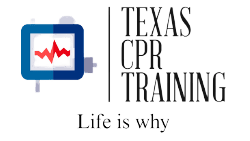How do You Know When Someone has Overdosed from an Opioid
In recent times, there has been an alarming increase in cases of opioid overdoses that have prompted government bodies, healthcare providers, and the general public to be more aware of the signs and symptoms of opioid overdoses. Opioids are a class of drugs that include prescription painkillers such as oxycodone, fentanyl, hydrocodone, and illegal substances such as heroin. Opioid overdose is a life-threatening emergency that requires immediate intervention. In this article we will be discussing the signs and symptoms of opioid overdose, and the steps to be taken if someone overdoses.
Signs and Symptoms of Opioid Overdose
The signs and symptoms of opioid overdose can vary from person to person and depend on several factors such as the amount of the drug taken, the type of opioid, and the method of ingestion. Some common signs and symptoms of opioid overdose include:
- Pinpoint pupils: Opioids can cause the pupils of the eyes to constrict or become very small
- Shallow breathing: Opioids can slow down breathing, and in some cases, breathing can stop altogether.
- Blue lips and nails: As the body becomes starved of oxygen, the lips and nails can turn a bluish color.
- Cold and clammy skin: Opioids can cause the skin to become cool and wet to the touch.
- Confusion: Someone who has overdosed on opioids may be confused, have problems with speech, or be difficult to wake up.
Steps to be Taken if Someone Overdoses:
If someone has overdosed on opioids, it is essential to act quickly to save their life. The following steps can be taken:
- Call for help: Call emergency services immediately as they have the skills and equipment needed to treat an opioid overdose.
- Administer naloxone: If you have access to naloxone, a medication that can reverse the effects of opioids, administer it immediately. Naloxone is availabe in different forms like nasal spray or auto-injectors.
- Monitor the person: While waiting for medical help to arrive, monitor the person’s vital signs such as their breathing, pulse, and level of consciousness.
- Provide basic life support: If the person is not breathing, start CPR or rescue breathing.
- Stay with the person: Opioid overdose can be life-threatening, and it is important to stay with the person until medical help arrives.
Conclusion
Opioid overdose is a severe and life-threatening emergency that requires immediate medical intervention. By understanding the signs and symptoms of opioid overdose and knowing what steps to take, we can help prevent tragic outcomes. It is also essential to remember that opioid addiction is a medical condition that requires effective treatment, and individuals struggling with addiction should be provided with access to resources and support. Early intervention and treatment can save lives and prevent future tragedies.
